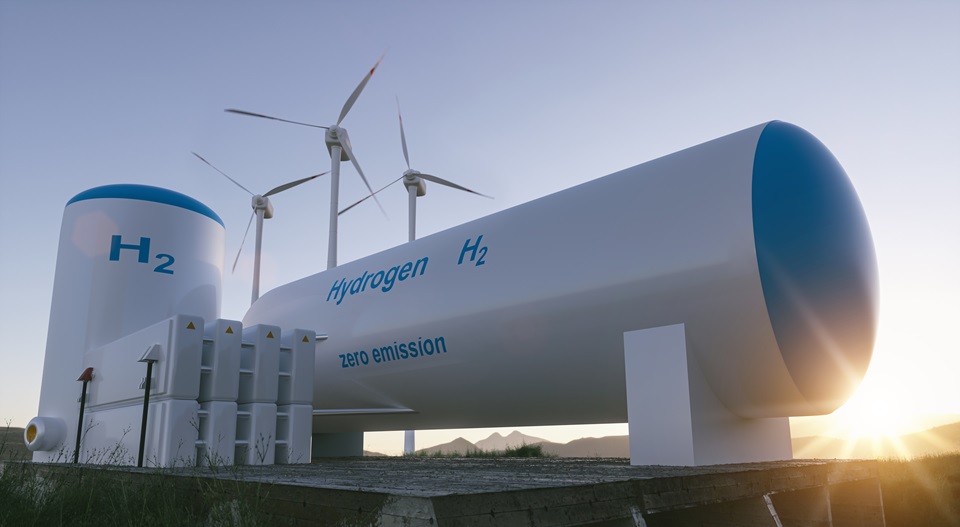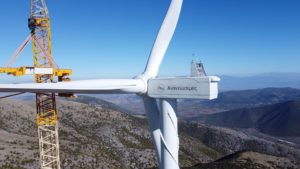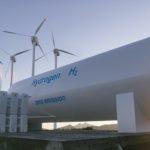The future of hydrogen in Romania: dispelling myth from reality

Report by Energy Policy Group (EPG). Authors: Alina Arsani (EPG Head of Energy Systems), Radu Cîrligeanu (EPG Senior Researcher), Alexandru Ciocan (EPG Senior Researcher), Mihai Constantin (EPG Researcher) and Mihnea Cătuti (EPG Head of Research).
Clean hydrogen plays an important role in the European Union’s (EU) efforts of reducing greenhouse gas (GHG) and becoming climate neutral by 2050. According to the REPowerEU plan, the EU aims to produce a highly ambitious 10 Mt/year of hydrogen domestically and to import another 10 Mt/year by 2030. To stimulate investments in hydrogen, clear targets for RFNBOs in industry and transport sectors were set through the Renewable Energy Directive (RED) III. Also, the European Hydrogen ‘Bank’ was introduced as an EU-wide facility for supporting projects. EU member states have committed consistent amounts of public funding for renewable hydrogen production, ranging from 0.39 billion €/GW in Spain to 1.43 billion €/GW in the Netherlands.
In response to the EU Hydrogen Strategy, Romania drafted its own strategic document. The draft National Hydrogen Strategy, currently in final adoption stages, estimates a need for investments worth €4.8 billion to produce 152,900 tonnes per year of renewable hydrogen by 2030. 47.3% of this hydrogen is envisioned to be used in transport, 37.2% in existing industrial activity, and 15.5% in new industrial applications, namely steelmaking. The draft strategic document suffered various changes during the consultation process, currently proposing an approach that is better aligned with the objectives of decarbonising Romania’s economy, by steering clear of proposing support for the use of hydrogen for heating in the residential sector and in combined-cycle gas turbines (CCGTs). Nonetheless, the public discourse is still flooded with faulty narratives on the future of hydrogen, especially on the doubtful expectation that hydrogen can either replace the use of natural gas in most current uses and it can therefore provide a lifeline for the continued use of fossil fuels throughout the following decades. To counter such narratives, this paper dispels a set of ten myths that are still pervasive in national discussions on hydrogen.
Myths about hydrogen production
Proponents of the continued fossil fuel-based production of hydrogen or those trying to dismiss the need to wean off fossil fuels, especially natural gas, invoke the potentially high cost of renewable hydrogen as the main challenge, seeing steam methane reforming as a cost-efficient alternative.
Myth: Renewable hydrogen production will be expensive. Although renewable hydrogen comes at a premium cost compared to fossil-based alternatives, there are more promising premises for cost reduction overtime based on expected strong reduction of investment costs in electrolysers (around 4 times until 2030 compared to 2023) and lower fuel costs, as the cost of renewable energy has been constantly decreasing over the past decade, especially for PVs.
Myth: Hydrogen produced from fossil fuels is more cost-competitive. The recent energy crisis demonstrated the volatility in the natural gas prices that can be induced by sudden, unforeseen geopolitical actions. Romania’s currently unexploited natural gas reserves (in the Black Sea) have generated expectations of decreasing natural gas prices in the future, but there is limited evidence that this new natural gas production would bring significant reductions in wholesale gas prices. Moreover, the utilisation of fossil fuels will become increasingly costly given the expected increases in CO2 price as a result of the EU-ETS revision. Current fossil-based production will need to be gradually phased out.
Myth: Blue hydrogen will be a cost-effective alternative to renewable hydrogen. Another common narrative is that blue hydrogen combines the potential advantages of relatively lower production costs (grey hydrogen – myth dispelled above) with a reduced carbon footprint, by capturing the CO2 emissions. Nonetheless, CO2 emissions cannot be fully avoided, with expected capture rates not going higher than 85-95%, while fugitive methane emissions would remain. The carbon price would therefore also affect this production method, while CCUS technologies are costly and increase operational costs. Access to CO2 storage infrastructure remains and additional barrier for this production route.
Myths about hydrogen consumption
Hydrogen has also been touted as an alternative to directly replace natural gas in multiple applications, including home heating, combined cycle gas turbines (CCGTs) and combined heat and power (CHP) plants. This narrative is used to create expectations on the continued use of the existing fossil infrastructure and to counter criticisms against new investments in gas-based infrastructure and capacities based on their inability to recover investment costs.
Myth: Hydrogen will replace natural gas in the heating of individual households. According to IRENA, a mix of 80% gas and 20% hydrogen could result in an increase by a third in consumers’ bills in 2030. Such a replacement would also be inefficient, almost half of energy within this process would lost, as for every 1 MWh of renewable energy, between 0.5 and 0.55 MWh of energy would be produced as heat. Alternatively, the direct use of renewable energy for heating through heat pumps is 6 to 9 times more efficient than using hydrogen for heating, as 1 MWh of electricity produced from renewable sources would generate 3-4 MWh of heat.
Myth: Hydrogen is a competitive solution for decarbonising passenger transport. Based on a comparison between fuel cell electric vehicles (FCEVs) and battery electric vehicles (BEVs) in terms of cost, overall efficiency, range, time of refuelling/recharge, infrastructure development and environmental footprint, it is difficult to make a definitive statements of the advantages on one over another. Still, the market favours BEVs for cost considerations resulting from constant improvements in battery technology, economies of scale created, and more developed charging infrastructure (build through public support). The higher overall efficiency of BEVs is also important – around 83% conversion efficiency compared to 30% in FCEVs. Therefore, the cost of energy per km is around 2.8 times lower for a BEV compared to a FCEV. Nonetheless, hydrogen will still play an important role in decarbonising long-haul transport, either through fuel cells, or as part of synthetic fuels used in aviation and maritime transport.
Myth: Hydrogen will replace current fossil fuel consumption in gas-fired power plants. The overall process would be highly inefficient, estimated at 37%. The combined effect of this lower overall efficiency and higher cost of hydrogen compared to natural gas would make such power plants highly uneconomical. These cost considerations raise the risk of continuing to operate on natural gas in the long run with additional pressure on consumers’ bills and detrimental effects on emissions.
Myths about hydrogen transport
The potential repurposing of gas grids for hydrogen transport and distribution and the blending process has also gained some traction domestically following the narratives on hydrogen use in household heating.
Myth: Natural gas pipelines can be easily repurposed for hydrogen. The main challenges and uncertainties of transporting hydrogen pure or blended with natural gas in the existing infrastructure are based on the negative effects on pipeline materials (as hydrogen increases the fatigue cracks rates in steel pipelines over time) and the consequences on operational indicators caused by the lower volumetric energy density of hydrogen compared to natural gas. For long distances, pumping hydrogen through pipelines becomes uneconomical with 50% of energy content being lost when pumped over 6,000 – 6,500 km. In the case of existing gas turbines, small amounts of hydrogen blended with natural gas can be used as fuel, without significant impact, but as the share of hydrogen increases problems are likely to appear.
Myth: Hydrogen can be immediately blended with natural gas in existing pipelines. Although thereis real-world evidence on the feasibility of such approach (e.g. Winlaton, UK using a blend of 80% natural gas and 20% hydrogen or the national 20HyGrid test performed by Delgaz in Darlos), the climate impact of such blending would be minimal. Above this threshold (20%), significant changes would be needed for various components – the maximum concentration of hydrogen in natural gas pipelines is significantly affected by pressure fluctuations, structure and existing defects. A major challenge at EU level would also be the wide variety of permissible hydrogen blending rates, which could constitute a barrier to trade.
Myth: Hydrogen can easily be transported over long distances. There are significant challenges associated with all potential hydrogen transport options. For distances lower than 1,500 km, the transmission of hydrogen as a gas by pipeline is generally the cheapest option, but this requires either the repurposing of existing infrastructure or new investments to connect sources of production to points of demand. For longer distances, transmission as ammonia or liquid organic hydrogen carriers (LOHC) might be a comparatively cost-effective option. but conversions come with significant efficiency losses. Shipping hydrogen could be done similarly with liquefied natural gas (LNG), requiring the liquefaction of hydrogen by cooling it to -253°C, but this is an energy-intensive process equivalent to between 25% and 35% of the energy content of the hydrogen transported. Transportation of electricity may, in some circumstances, be preferable to pipelines or shipping. Long distance ultra and high voltage DC cables, transporting energy in the form of electrons and generating hydrogen locally by water electrolysis represents a promising alternative. However, there are also challenges associated with expanding the existing power grid.
Myth: Replacing gas with hydrogen eliminates mid-stream emissions. Fugitive hydrogen emissions and their potentially detrimental effect on the climate should also be considered when assessing the usage of this energy carrier. Hydrogen’s indirect warming potency per unit mass is round 200 times higher than that of CO2 according to the Atmospheric Chemistry and Physics.
Hydrogen will be an energy carrier most likely used in a limited set of high-value applications where few technological alternatives exist. Romania could benefit from the opportunities of the clean hydrogen economy by adopting a pragmatic approach on the optimal use of hydrogen. This could be done by:
- Grounding the national strategic vision and specific legislation in objective, science-based analysis about the associated opportunities and risks;
- Aligning strategic national documents and legislation in terms of decarbonisation targets and hydrogen perspectives;
- Developing and mapping targeted funding opportunities for renewable hydrogen at national level;
- Training the necessary human resources;
- Adopting a strategic approach on imports and exports of hydrogen;
- Understanding the important role of hydrogen storage;
- Attracting investors in the manufacturing of hydrogen-related equipment.
Photo: E.ON Romania














